What Is Search.firstmacs.com Mac Virus?


Search.firstmacs.com falls under the category of Mac browser hijackers, which, as the name suggests, installs itself in a method that prevents users from accessing their home browser once it is opened. The only way to regain access to your favorite browser is by performing a hard reset and removing all preferences related to Search.firstmacs.com and its subsidiaries from the Launchpad utility screen in OSX. The way in which Search.firstmacs.com is distributed is through a variation of the Confuser exploit kit. Confuser, a series of applications that exploit vulnerabilities, primarily targets major browsers such as Safari, FireFox and Google Chrome. As Search.firstmacs.com is installed on your Mac, you may end up being redirected to Google.com or Yahoo.com in order to visit the Search.firstmacs.com domain and submit a legitimate form in order to receive the search results from the respective search engines. In order to use that form and reset your browser preferences, you are required to install an extension for either Safari or Google Chrome. The very same popup is also displayed after the installation of the Search.firstmacs.com extension.
How Is Search.firstmacs.com Mac Virus Distributed?
The Mac browser hijacker of the same name was released using the same distribution method as that of the Confuser exploit kit. Once the package reaches your Mac, it will download and install the Search.firstmacs.com browser extensions into both Google Chrome and Safari; but, it may also replace your homepage preferences in both browsers with a fake search engine page that will attempt to take you to Search.firstmacs.com whenever you attempt to google for any particular search query. The good news is that Search.firstmacs.com is quite a simple virus to remove on your Mac as it was distributed using a relatively well known exploit kit which can be destroyed easily with the help of manual removal or automatic removal methods that are available. However, if you attempt to remove all preferences related to Search.firstmacs.com manually, you might end up infecting your Mac with other malicious files that are related to the same hijacker.
How harmful is Search.firstmacs.com hijacker?
Search.firstmacs.com hijacker not only tries to replace your homepage and search preferences with the Search.firstmacs.com domain, but it also changes important system settings such as the Safari home page, default search engine and default home page, default browser homepage and default browser’s homepage, thereby tricking you into thinking that it was a system or software update instead of a hijacker that has invaded your Mac in the form of an application.
How did I get infected?
The most common way in which an individual is usually infected with Search.firstmacs.com hijacker is through the use of a bundled software application that has been distributed along with the Mac browser hijacker, such as Avia, Uberizer and SWA. In such cases, users are not provided any choice except to accept or decline the installation of the unwanted application and subsequently install Search.firstmacs.com on their Macs without their knowledge or consent.
How can I remove Search.firstmacs.com virus ?
Step 1: Uninstall Search.firstmacs.com and remove related files and objects
- Open your Finder –> Click on GO –>Click on Utilities
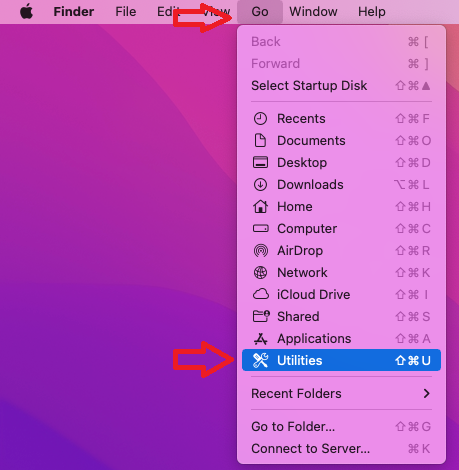

- Find Activity Monitor and open it


- Review all the processes in Activity Monitor and write down the ones related to Search.firstmacs.com virus
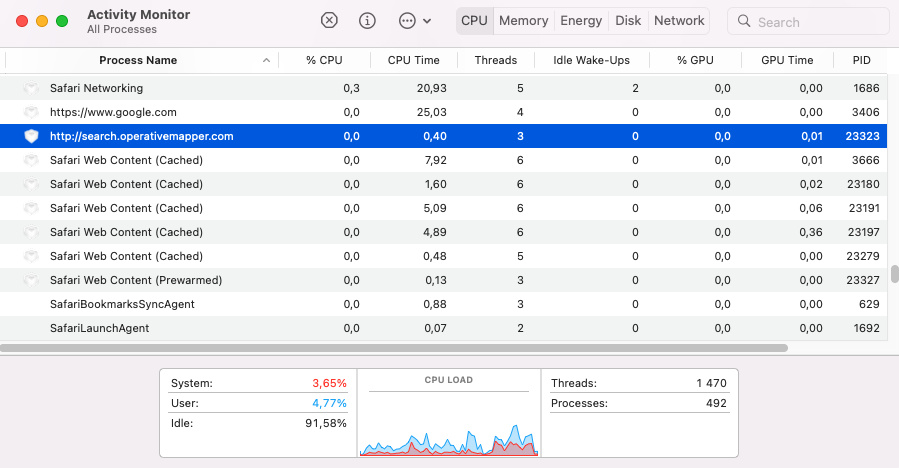

- Select Quit
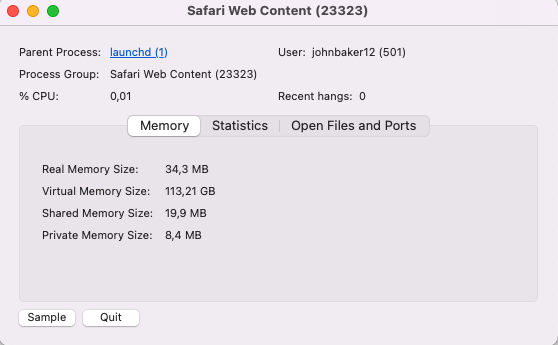

- To kill the malicious process, choose the Force Quit option.


Step 2: Remove Search.firstmacs.com – related extensions from Safari / Chrome / Firefox
The first thing you need to do is to make sure Safari is not running. If you have troubles closing it, you may need to Force Quit Safari - (Start Activity Monitor by opening up Finder, then proceed to Application --> Utilities --> Activity monitor. Locate the Safari process and force quit it.
Safely launch Safari again by holding the Shift key and clicking on the Safari application icon - This will prevent Safari’s previously opened malicious web pages.
In case that you still are having trouble with scripts interrupting the closing of unwanted pages, please do the following:
- Force Quit Safari again.
- Disconnect form Internet and try again.
Then Re-Launch Safari but don’t forget to press and hold the Shift button to prevent pop-ups. Then, click on Preferences.


- Carefully take a look at your default home page and change it if the hijacker altered it.
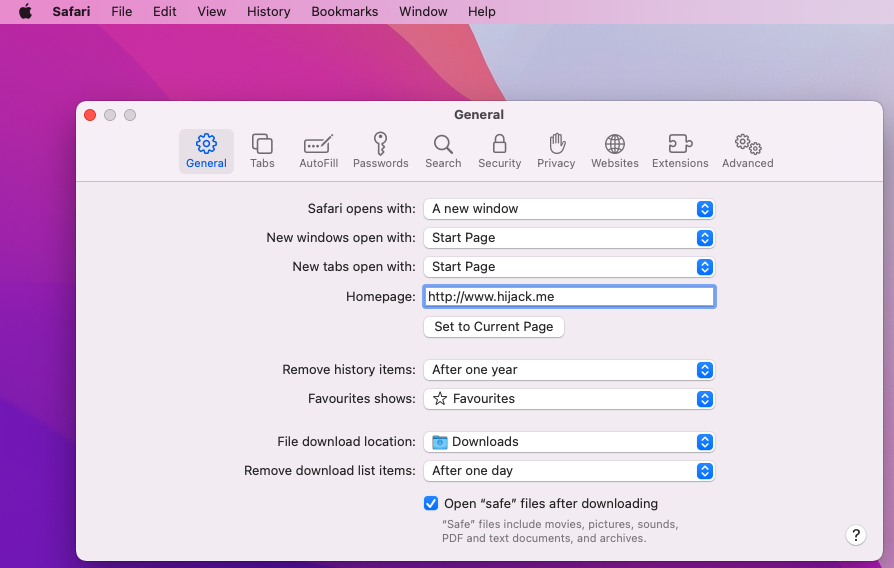

- Then go to the Extensions tab and make sure there are no unknow extensions installed.


- Next step is to click on Privacy tab
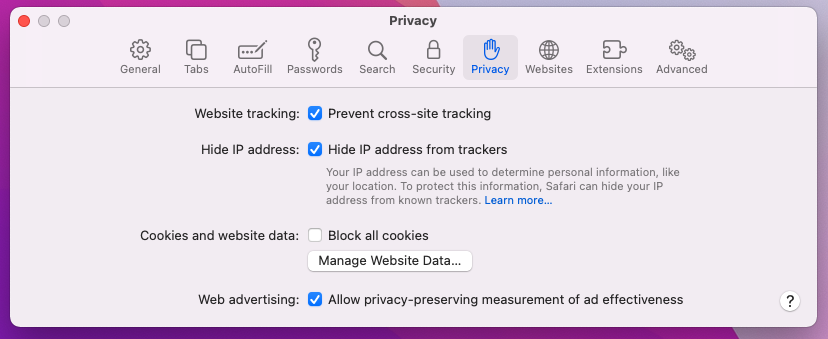

- Manage website data


- Here you can remove any unwanted website data or just remove them all. Please, keep in mind that after you do this all stored website data will be deleted. You will need to sign-in again for all websites that require any form of authentication.
- The next step is to Clear History (if you want), select the tab.


- Click the menu next to clear and choose a time period — if you want to completely reset Safari, choose all history.
- Press Clear History
- To remove from Chrome, open the browser and click the icon with the three dots located in the top-right.
- Select to More Tools --> Extensions and review what Chrome Extensions are present in the browser


- Remove the ones that you do not recognize.
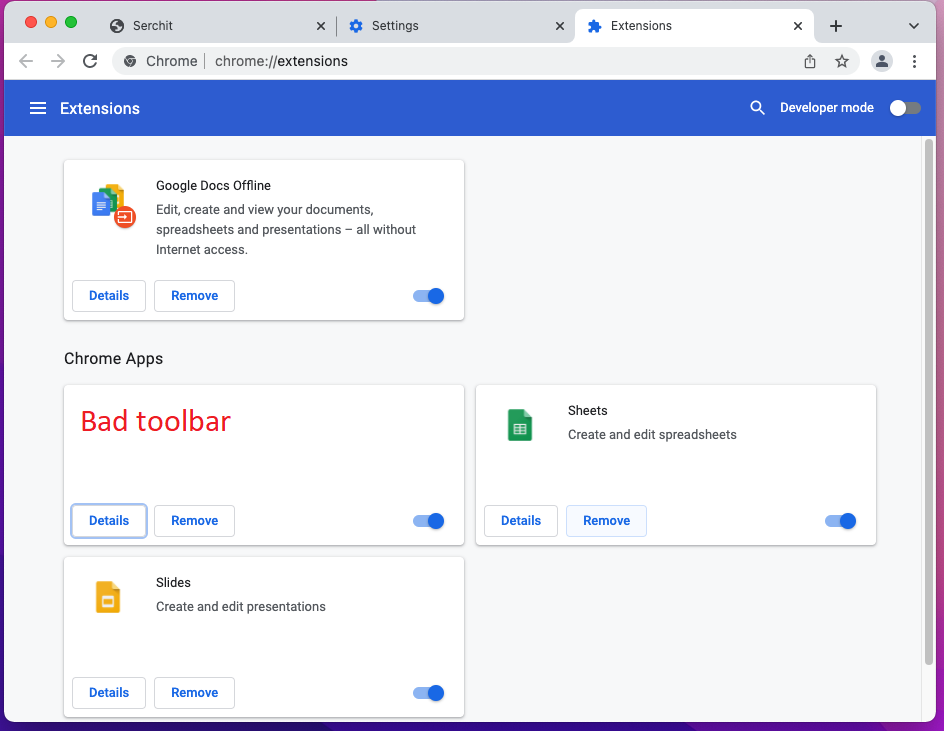

- If the parasite continues to disrupt your browsing with Chrome, this is what else you can do:
- Click again the menu of Google Chrome, and open Settings.
- Select the Search Engine from the left panel, review the available search engines and change the default to your preference.


- Then, click on Manage Search Engines, review the list of search engine availabilities and if any of the listed items looks suspicious, click the three-dots next to them, and delete.


- Click on Privacy and Security in the left panel, select the Clear browsing data option, check every box except the Passwords one, and click Clear Data.


- Next step is to clear Notifications, select the Site settings option in the Privacy and Security section, then locate Notifications.


- Review the listed websites in the Allow to send notifications section and if any of the entries shown there seem dubious or related to the browser hijacker, select the three dots next to the object and click on Remove.
- Start Mozilla Firefox
- On the top right click the three dashes
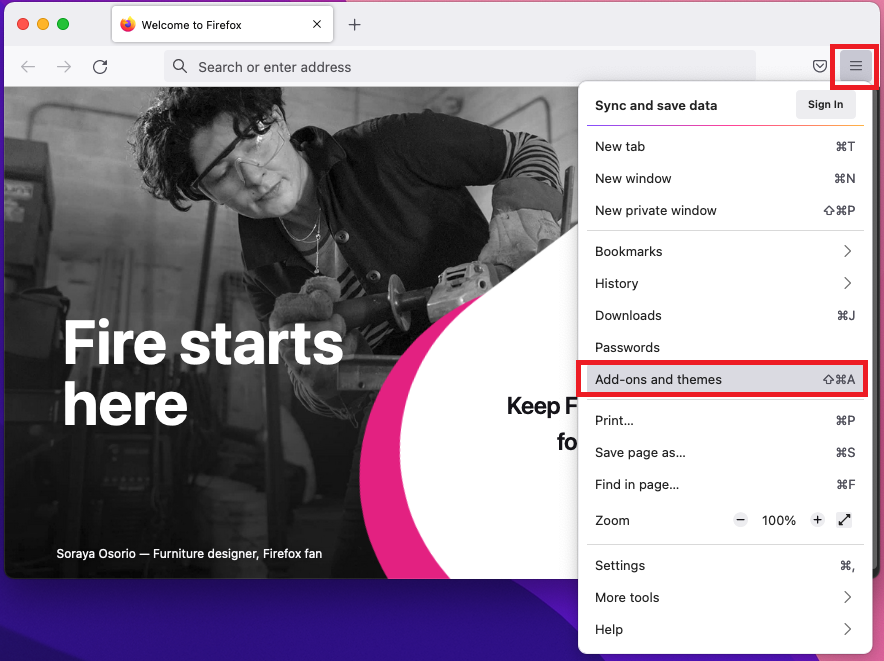

- go to add-ons and themes
- The add-ons manager will open
- Carefully review review four Firefox Extensions
- If any unwanted extension is present, click on the three horizontal dots and then Remove
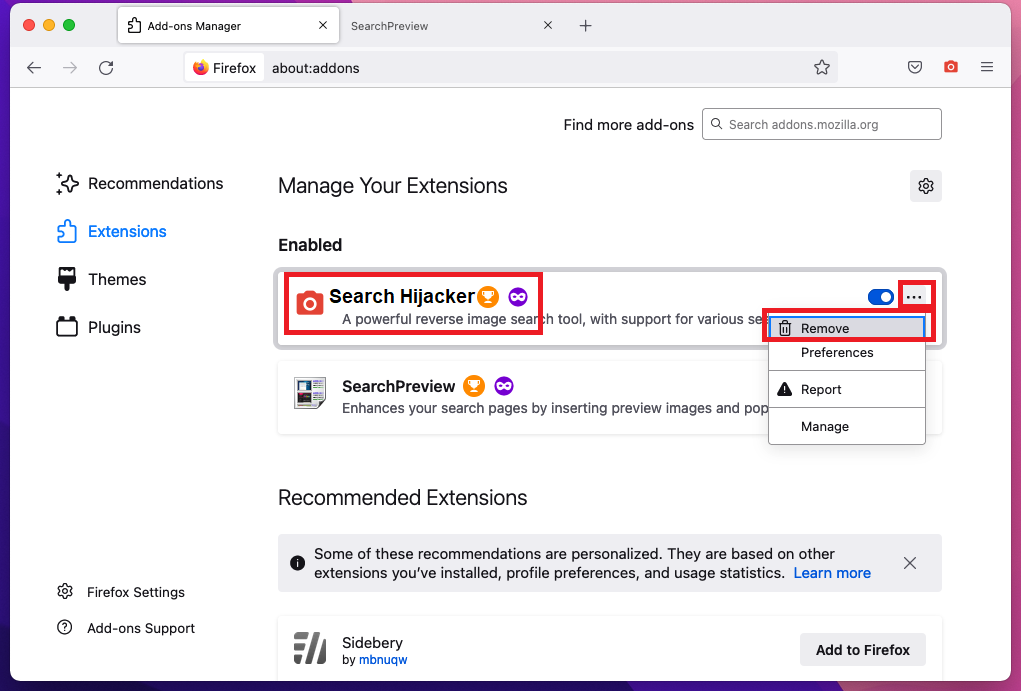

- After the extension is removed, restart Mozilla Firefox by closing it from the red dot in the top left and start it again.
Step 3: Scan for and remove Search.firstmacs.com files from your Mac
Fix your browser settings with SpyHunter Anti-Malware
Once you download and install SpyHunter for Mac run a scan.
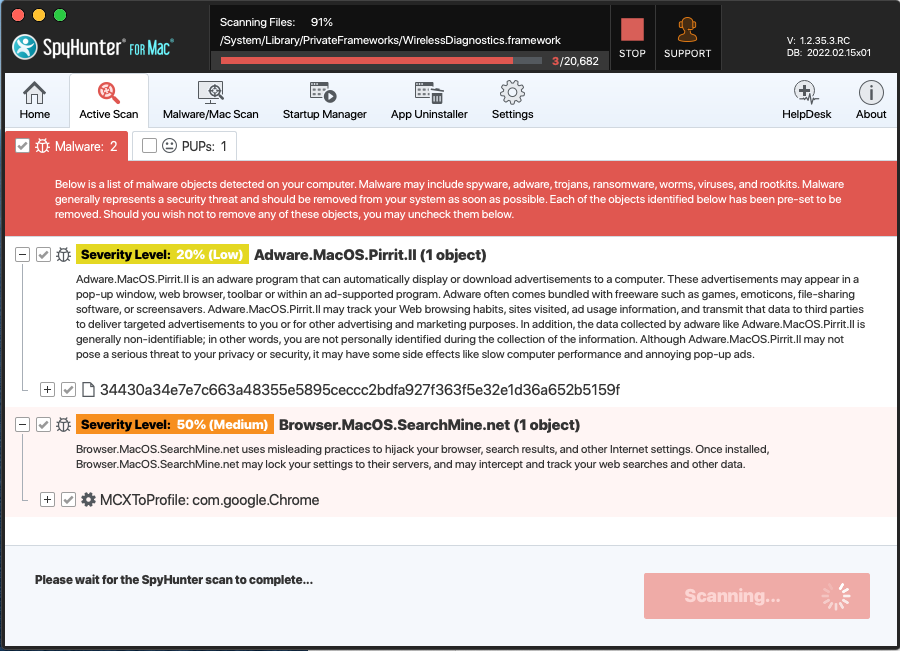

Once the scan is complete, your mac will be virus free.
Search.firstmacs.com malware Frequently Asked Questions:
- How do I get rid of Search.firstmacs.com?
Search.firstmacs.com is a Browser hijacker – malicious software that can be installed by third-party applications or websites. They usually change the settings of web browsers and search engines to display certain ads, pop-ups, banners, etc.
- What are the symptoms of Search.firstmacs.com infection in your Mac?
Search.firstmacs.com becomes your web browser’s built-in search engine.
Your browser’ s search queries are redirected through Search.firstmacs.com.com
The “Search.firstmacs.com” browser extension or some shady software is installed on your Mac.
- How do I remove Search.firstmacs.com from my browser?
In Internet Explorer, click the gear icon on the top left and select Manage add-ons. Under Add-on Types, select Search Providers. Select your search engine from the list of providers and click Remove to remove it. In Google Chrome, go to Settings (at the top right) and choose Search in the On Startup drop down menu.
- How do I uninstall Search.firstmacs.com?
How to Make Your Mac Run Faster?
You might be wondering how to make your Mac run faster? It is a common misconception that the more processing power you have, the faster your computer will run. In reality, it’s actually about what’s going on in your processor and memory. For the average person using a computer for just general applications like word processing and web browsing, you don’t need much in the way of computing power.
– Use an SSD drive instead of a hard disk drive.
– Double your RAM if possible.
– Disable System Integrity Protection (SIP). (Attention! – do this only if you know the consequences.)
References:
- More about pop-up advertisements on Wikipedia.
- MacOS malware
- SpyHunter Anti-Malware overview and also the reasons why we recommend it for malware elimination.
Please, have in mind that SpyHunter offers a free 15-day Trial version with full functionality. Credit card is required, no charge upfront.

